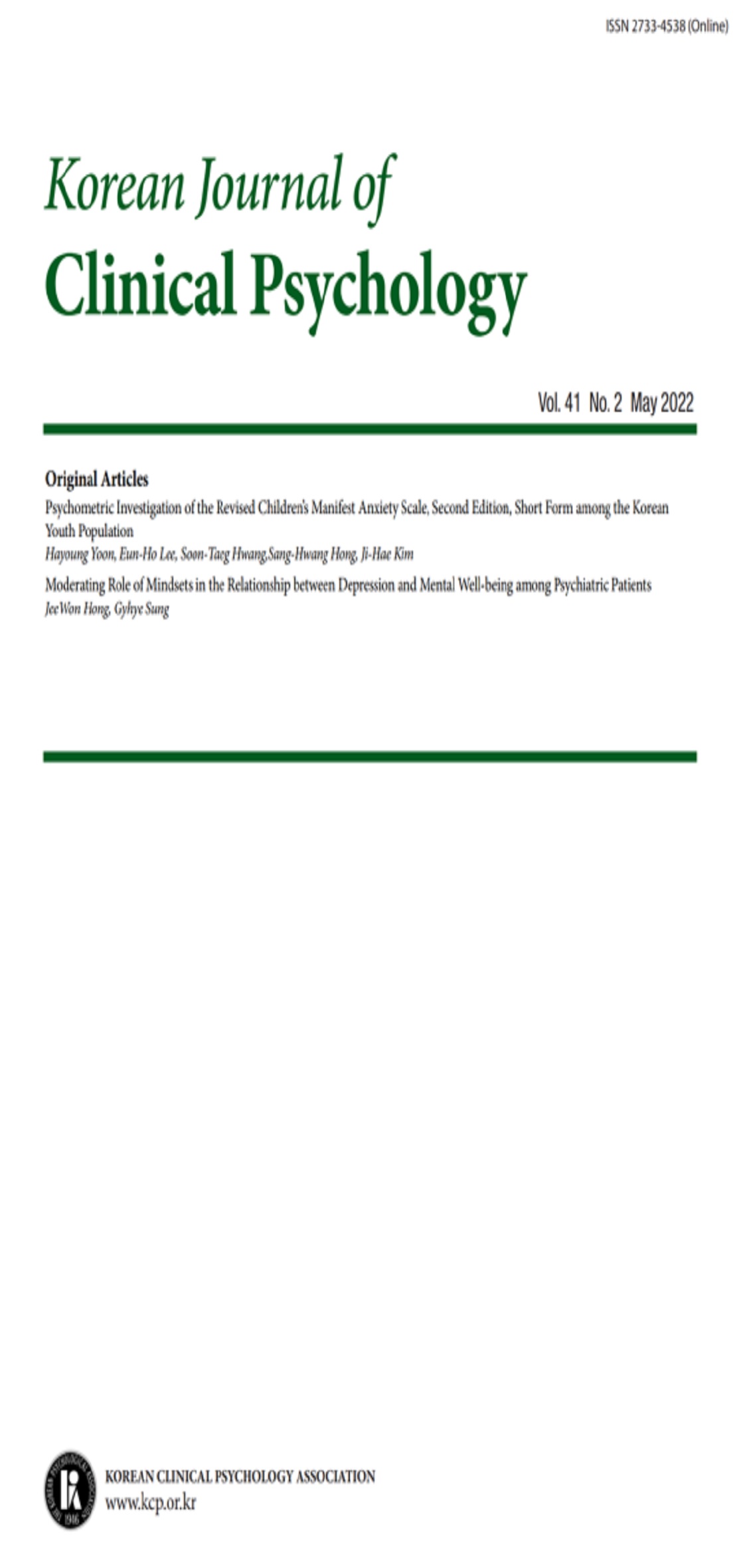open access
메뉴
open access
메뉴 E-ISSN : 2733-4538
E-ISSN : 2733-4538

본 연구는 물질관련장애환자와 비중독 정신과 환자들을 구별하는 데 있어서 미네소타 다면적 인성검사 2판(MMPI-2)에 포함된 물질관련장애 평가척도들(MAC-R, APS, 그리고 AAS)의 유용성을 알아보기 위해 수행 되었다. MAC-R, APS, 그리고 AAS 세 척도들 모두 물질관련장애를 탐지하는 데 유용하다는 결과가 얻어졌다. 미네소타 다면적 인성검사 1판(MMPI)에 포함되기도 했던 MAC-R 척도에 비해 MMPI-2에 새롭게 포함 된 APS와 AAS 척도들이 물질관련장애 탐지에 얼마나 더 효과적인지를 알아보기 위해 일련의 위계적 회귀 분석을 실시한 결과, 물질관련장애를 예언하는 데 있어서 APS 척도는 MAC-R 빛 AAS 척도들보다 훨씬 예언력이 낮은 것으로 나타난 반면, AAS 척도는 MAC-R 척도에 상당하는 예언력을 보였다. 또한 세 척도들에 대한 적정 변별점(cutoff)과 분류률이 조사되었다. MMPI-2에 새롭게 포함된 APS와 AAS척도들이 기존의 MAC-R 척도를 능가하는 변별력을 보이지는 못했으나, 다양한 특성의 표본들을 이용하여 새 척도들의 임상적 유용성을 평가하는 더 많은 연구가 이루어져야 할 것으로 보인다.
This study examined the effectiveness of the MMPI-2 substance abuse scales, MAC-R, APS, and AAS, in differentiating between substance abusers and non-substance-abusing psychiatric patients. Results support the use of all three scales at assessing substance abuse problems. The incremental validity of APS and AAS in comparison to MAC-R was examined using a series of hierarchical regression analyses. Results indicate that AAS added substantially to MAC-R and APS in predicting substance abuse and that APS added only moderately to MAC-R and AAS. Although AAS demonstrated the superiority over APS in detecting substance abuse problems, the addition of AAS did not provide discriminative information beyond that provided by MAC-R alone. Optimal cutoff scores and classification accuracy were also evaluated. Suggestions were offered for furcher research to establish the clinical utility of the new scales in various settings.
